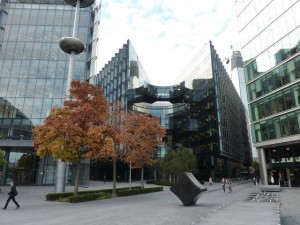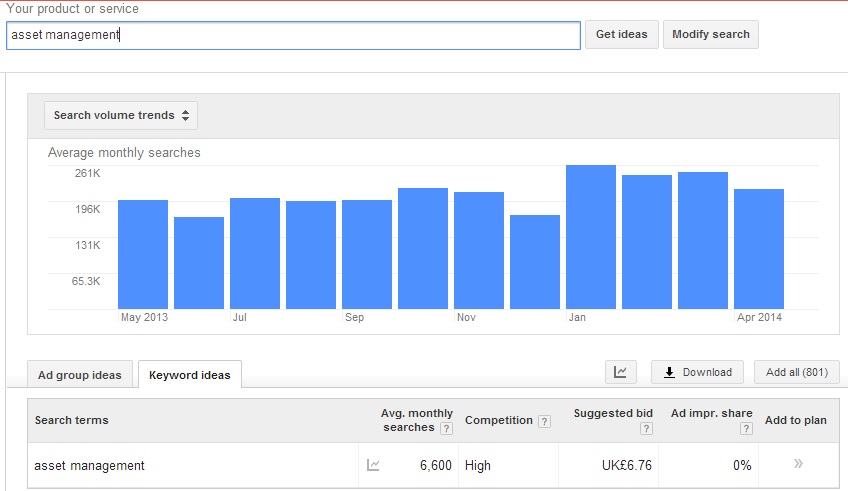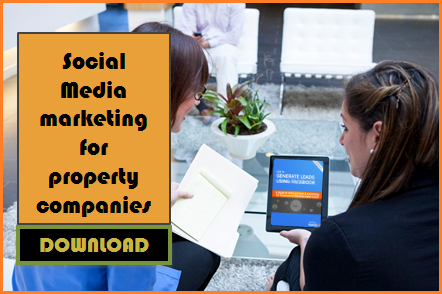Five things property companies need to know about social media
Social media is beyond ubiquitous, so you can be forgiven for finding the prospect of entering the world of social engagement daunting.
 The truth is, you don't need to know how each of the abundant social media platforms work to realise that if you aren't using social media as a key component in your property scheme's marketing mix, you are missing out on a vital tool for engaging with your target audiences – potential occupiers who are using social media platforms to search for residential and commercial property space online every day.
The truth is, you don't need to know how each of the abundant social media platforms work to realise that if you aren't using social media as a key component in your property scheme's marketing mix, you are missing out on a vital tool for engaging with your target audiences – potential occupiers who are using social media platforms to search for residential and commercial property space online every day.
When e-mails were first introduced, people thought this new 'fad' just wouldn't catch on, leading to questions like: "How can we trust this new technology to deliver our important, and sometimes confidential, information?" and "Maybe I should call to check they received my email, just in case …"
Well it caught on, so much so that in the RDPR office and many companies across the globe, teams have put bans on sending emails internally when you can see and speak to the person you wanted to talk to across the office – something which could never have been imagined back in the days of the fax machine.
Social media is no different, and judging by the steady and consistent increase in user numbers over recent years, its usage is only likely to continue to grow.
As a commercial and/or residential property agent, you're probably already employing a variety of marketing tools to promote your schemes to potential occupiers – from scheme brochure mail-outs, e-mailers to, launch events and media relations, but have you considered what role social media could play in the marketing mix?
Whether you have a student residential tower to fill, a mixed-use leisure scheme to find occupiers for, or a Grade 'A' office scheme to promote – here are five things you need to know about social media and how it can act as a cost-effective way to increase awareness of your property scheme:
1. It can be used to target niche occupier groups: Often a commercial property scheme is designed with a specific occupier in mind, responding to an increase in demand from a particular sector.
But these specific audiences can be difficult to reach via traditional media relations. Small and Medium-sized Enterprises (SMEs) for example can come from a host of different sectors, so how do you get your messages to reach them via their preferred medium in a cost-effective way?
 Social media platforms such as Twitter, Google+ and LinkedIn can be invaluable in identifying these types of niche groups and can be used to gain valuable insights into their behavioural patterns.
Social media platforms such as Twitter, Google+ and LinkedIn can be invaluable in identifying these types of niche groups and can be used to gain valuable insights into their behavioural patterns.
In using social media as a demographic research tool prior to engagement, you are able to develop an understanding of their needs and requirements before going on to advise and ultimately influence their decision-making processes, when the time comes for taking up new living or work accommodation.
2. It creates a sense of community: When searching for a new living or work space, the potential occupier is also looking for added value. This is particularly true for business owners, for whom the decision is not only about presence and profile, but also about ensuring that their employees are happy.
Ultimately, any business owner wants their employees to feel a sense of ownership and pride in their place of work. Using platforms like Twitter and Facebook to promote communal events and activities, which all occupiers can take part in, helps potential occupiers to imagine how they can fit in to the community. So, if it comes down to a choice between a few viable options – the scheme that employees prefer will always win.
3. It gives your scheme a personality: The way that people consume information has evolved to the point where social media platforms are used as news-gathering tools in all walks of life. But how do you keep your messages relevant and interesting without putting people off by being too 'salesy'?
Make your posts varied and talk about things other than how much space you have available from time to time. By promoting activities in the local area or general interest stories about the city or region in which the scheme is based, you will encourage followers to turn to you for interesting and relevant content.
 By offering an opinion when posting and engaging in conversations with your followers, you will also demonstrate that you are not just using social media platforms to sell space.
By offering an opinion when posting and engaging in conversations with your followers, you will also demonstrate that you are not just using social media platforms to sell space.
Instead, you will become a valued member of the social community with your own views, personality, and most importantly, friends and proponents, who will hopefully go on to recommend you should the opportunity arise.
4. It increases your visibility: Social media platforms are also a great way to get added value for your other marketing activities. Any marketing content that is created for the scheme, whether it is the scheme brochure, a promotional video, or the latest batch of photography, can be pushed out through social media channels, creating more opportunities to engage with your target audiences.
Including rich media content also helps to push your scheme website up the Google rankings, giving you the potential to appear in Universal Search results for relevant terms and making you more visible to potential occupiers when they search for new office or living space online.
5. It generates tangible results: Above all, social media provides tangible, quantifiable results which can be used to provide clear and transparent evaluation for the client. And because social media is so fast-moving, if a campaign is not producing the right results or the right levels of engagement – the strategy can be amended quickly to ensure you and your client are seeing tangible results that will ultimately increase enquiry levels.
We'd love to hear your views on social media, whether you think it's a great tool for promoting property availability or a time-sink that produces ambiguous results – so don't be shy and let us know your thoughts via Twitter.
We've also produced a free beginner's guide to social media for the property sector, so don't miss out and download it now:
Images used courtesy of Wikimedia Commons and Geograph.org.uk
Selected industry experts bring you insight and expert advice, across a range of sectors.
Subscribe for free to receive our fortnightly round-up of property tips and expertise
Selected industry experts bring you insight and expert advice, across a range of sectors.
Subscribe for free to receive our fortnightly round-up of property tips and expertise






